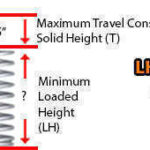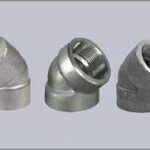A flue gas stack or chimney is typically a vertical tubular structure used for ejecting exhaust flue gas to the atmosphere. You can see the chimney or flue gas stack in thermal power plants, diesel gensets, kilns, and many other plants, where gases evolving from the combustion process need to be exhausted. The design calculation for flue gas stack varies from application to application. Here in this article we will discuss the basic design criterion of diesel engine-driven genset flue gas stacks. See below how to calculate the diameter and height of the flue gas stack of a diesel genset:
Calculate Flue Gas Stack Height
– Calculate the specific fuel consumption of your diesel genset. Say it is X kg. Per hour.
–
Find out the percentage of sulphur content in the diesel you are using. Say it is P%.
– Now, you have to calculate the sulphur dioxide (SO2) percentage in flue gas. Since the atomic weight of SO2 is double the atomic weight of sulphur, the percentage of the SO2 in flue gas is 2P %.
– The height of the flue gas stack (in meters) according to SO2 emission can be calculated as:
Height (H) = (X*2P)/100…………….Eqn. 1.1
– Now, you have to check out the recommended minimum chimney height by the Central Pollution Control Board (CPCB). In case the height calculated from the Eqn. 1.1 is higher than the recommended height by CPCB then you go ahead with the calculated height or else you have to stick to the CPCB recommended height.
Calculate Flue Gas Stack Diameter
– Calculate the exhaust gas quantity. Say it is Y kg per hour.
– Select the flue gas velocity you want to keep inside the stack. Say Z meters per second (Recommended flue gas velocity inside the stack is 16 to 20 m/sec as per IS: 6533).
– Diameter (in mm) of the flue gas stack can be calculated as:
Diameter (D) = [(4*Y)/ (3.142*Z)]0.5 …….Eqn.1.2
Conclusion
The design of the steel stack or chimney is important from the diesel genset performance as well as air pollution point of view. While doing the flue gas steel stack design calculations you should consider the design formulas and local pollution control norms.


